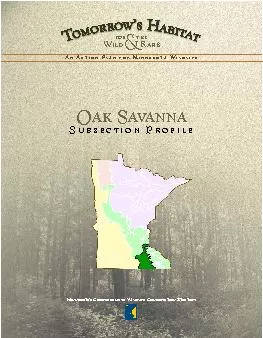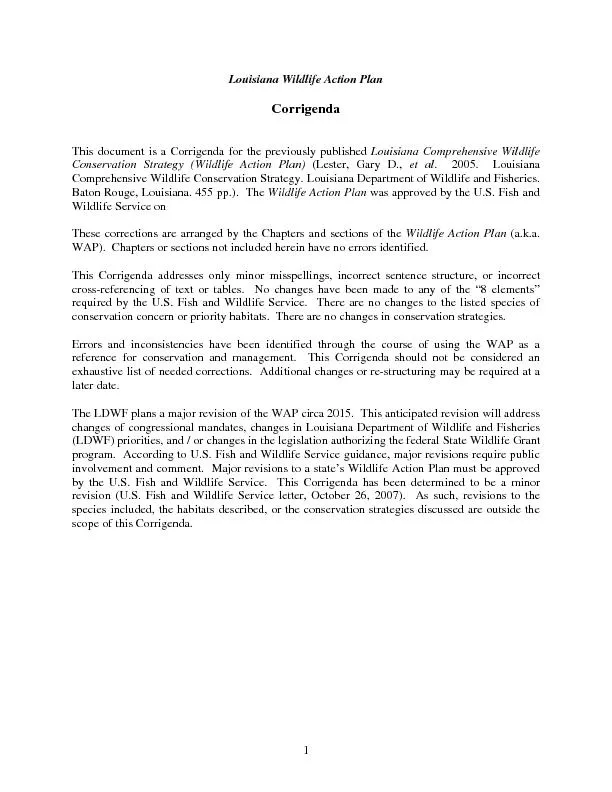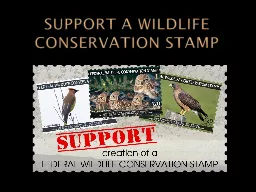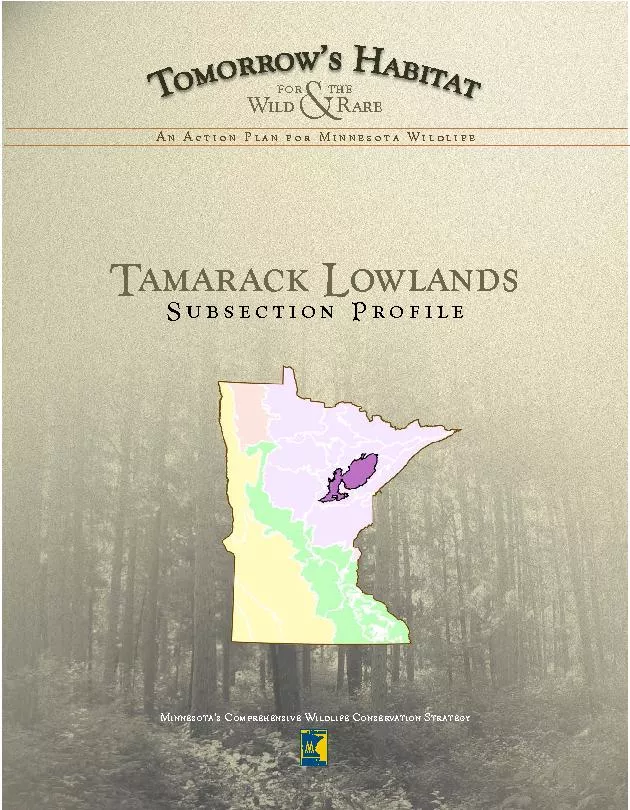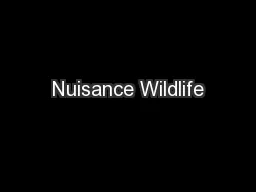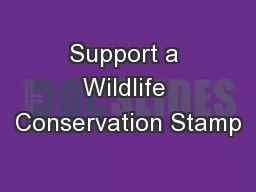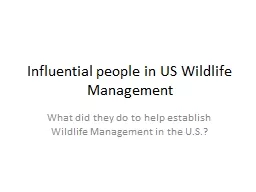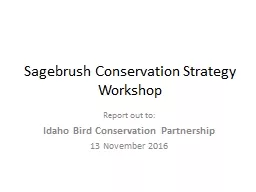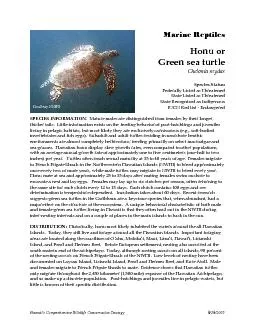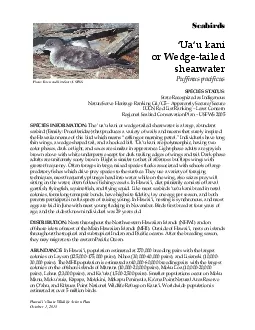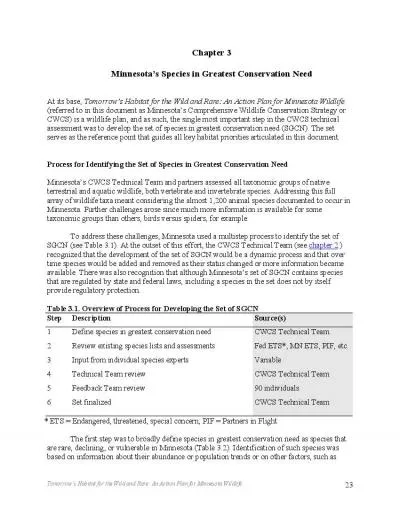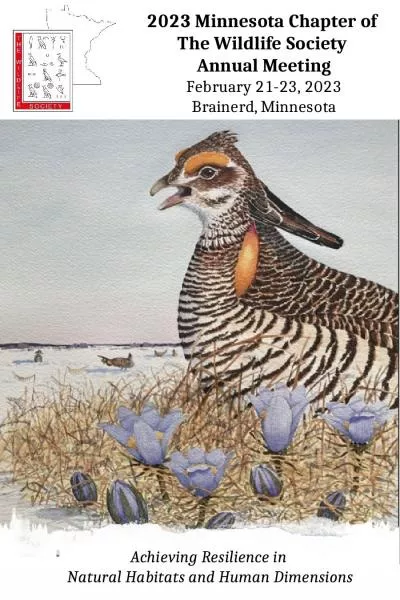PDF-Minnesota’s Comprehensive Wildlife Conservation Strategy
Author : alida-meadow | Published Date : 2015-10-16
for the Wil d Rare Oak Savanna SubsectionProfile An Action Plan for Minnesota Wildlife Tomorrowx2019s Habitat for the Wild and Rare An Action Plan for Minnesota
Presentation Embed Code
Download Presentation
Download Presentation The PPT/PDF document "Minnesota’s Comprehensive Wildlife ..." is the property of its rightful owner. Permission is granted to download and print the materials on this website for personal, non-commercial use only, and to display it on your personal computer provided you do not modify the materials and that you retain all copyright notices contained in the materials. By downloading content from our website, you accept the terms of this agreement.
Minnesota’s Comprehensive Wildlife Conservation Strategy: Transcript
Download Document
Here is the link to download the presentation.
"Minnesota’s Comprehensive Wildlife Conservation Strategy"The content belongs to its owner. You may download and print it for personal use, without modification, and keep all copyright notices. By downloading, you agree to these terms.
Related Documents

